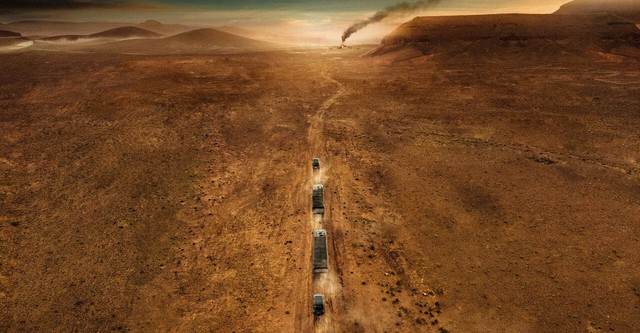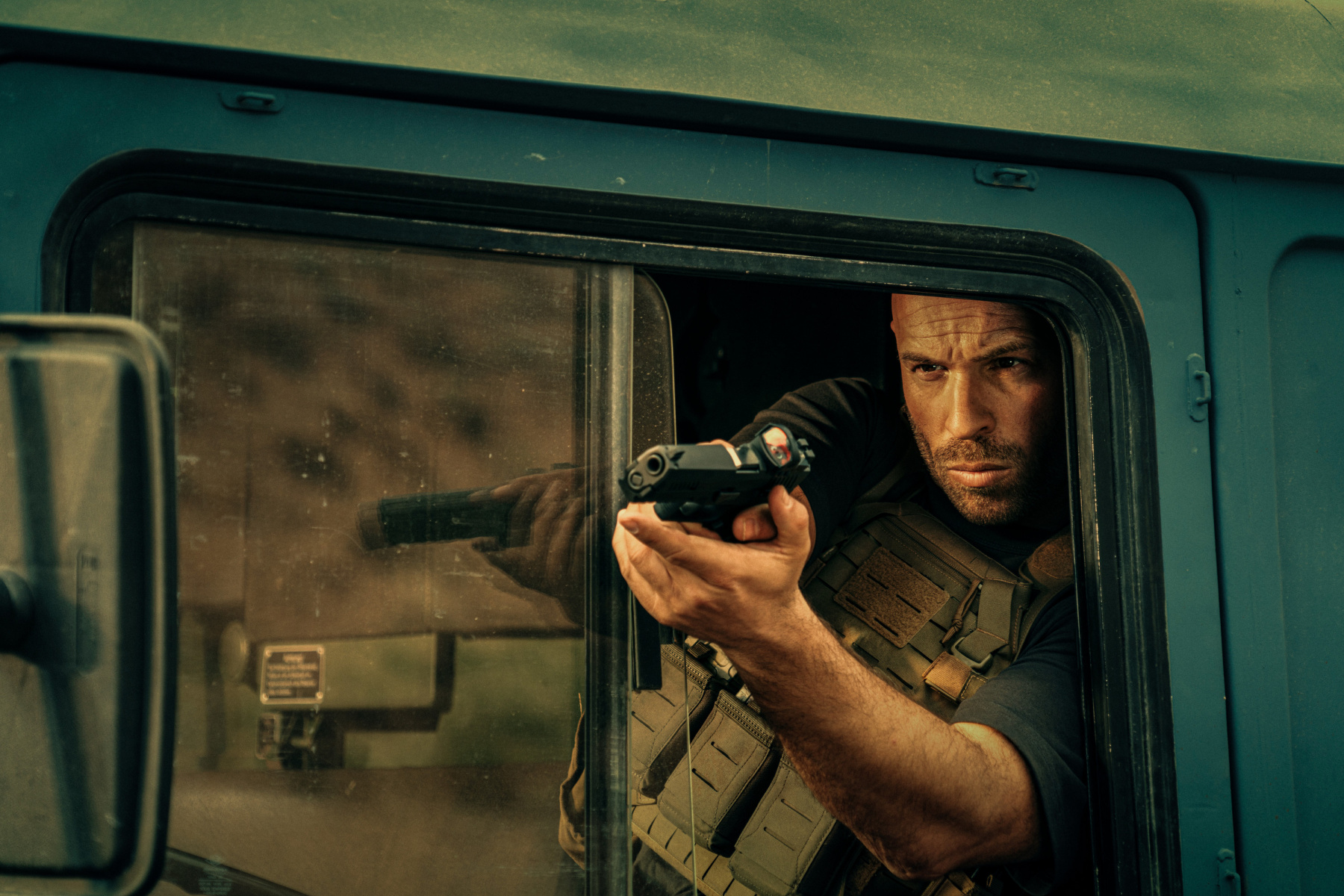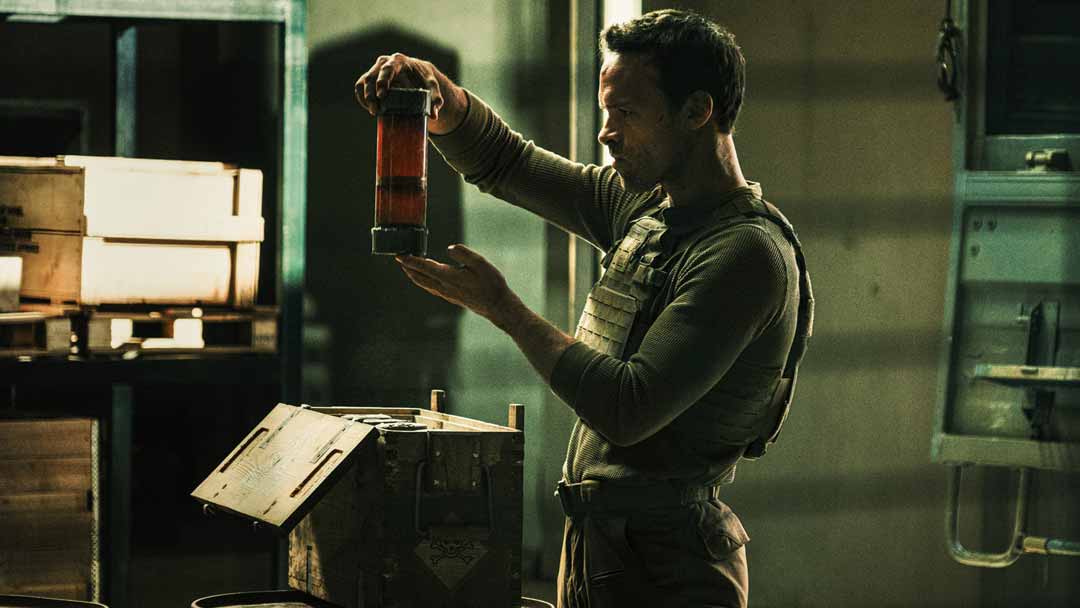There’s a sort of sacred duty that goes along with remaking a classic film. That doesn’t mean the remake has to be good; many of them are terrible. It does mean, however, that there has to be some sort of credible artistic justification for making the movie, whether that’s a director with a certain vision, an actor who was born to play a role made iconic by the original, or a wild new take that uses the original’s core components but spins them off in some unexpected direction. You can’t just do the remake because you have a couple million dollars lying around and some actors looking for work.
That seems to be about the level of inspiration for Julien Leclercq’s The Wages of Fear, new to Netflix, which is of course a remake of Henri-Georges Clouzot’s 1953 stone-cold masterpiece of the same name. The only animating force behind making the movie appears to be the fact that both Leclercq and Clouzot are French – or were in the case of Clouzot, who died in 1977. The action takes place in the desert of an unspecified third-world country, where NGOs are trying to help the locals on one side, and bandits and corrupt military are serving as opposition. Just in case you were wondering, this is not the aforementioned “wild new take that uses the original’s core components but spins them off in some unexpected direction.” Unless that direction is to make the whole movie look like a shoddy TV enterprise and entirely sap it of the tension that coursed through Clouzot’s film.
The premise of the original Wages of Fear is what has allowed it to get multiple remakes, the most prominent of which before now was William Friedkin’s 1977 film Sorcerer. As proven in Leclercq’s film and to a lesser extent in Sorcerer, it isn’t the plot itself that made the original so great, but what Clouzot did with it. Even with the different wardrobe, this Wages of Fear is the same story, which is that a handful of daring drivers and explosive experts must move 200 kilos of nitroglycerin 500 miles across rough terrain in order to extinguish a fire in an oil well, before it extinguishes everyone in the surrounding villages. The trouble is, nitroglycerin is so sensitive to being bounced and jostled that any wrong move could cause one truck to go sky high. Or both trucks, if they aren’t separated by a reasonable distance. In fact, the reason for putting 100 kilos in each truck is as much to ensure that at least one of them arrives in one piece as it is to give breathing room to the nitroglycerin.
In the first of many details that make this seem a lot more like an action movie than the sociopolitical thriller Clouzot made, the two drivers are brothers, one of whom went to prison after killing corrupt cops as part of the other’s professional security service. The recently imprisoned explosives expert is Alex (Alban Lenoir), who gains his release from prison in order to complete the daring mission and try to save the local village from a raging inferno that has less than 24 hours to come under control. His brother, the expert driver Fred, is played by Franck Gastambide, who is basically France’s answer to Vin Diesel in appearance and general attitude. Alas, Gastambide lacks even Diesel’s questionable charisma, and the similarity to Diesel symbolises the low level of ambition for the project.
To give you some sense of the contrast with Clouzot’s original, that film spends its first 30 minutes in a dead-end South American town, establishing the stasis of the characters who agree to the dangerous convoy and how few other choices they had to escape from the drudgery of their lives. By kicking off the action with high concept narrative materials involving thwarted sieges, imprisoned brothers and NGOs attacked by marauding bandits, The Wages of Fear signifies how little interest it has in character development or building tension, and ultimately how little it has on its mind despite the superficially thoughtful geopolitcal context. While Clouzot’s characters, ordinary men rather than explosives experts and professional drivers, had to navigate a broken road infrastracture to keep themselves and their package intact, the greatest threat to the nitroglycerin here is exchanges of gunfire that happen about three different times throughout the movie. The fact that not a single bullet pierces one of these glass vials is a bridge too far – when an actual impassable bridge would have done many more wonders for the stakes and the excitement.
Leclercq’s film does poorly enough without comparisons to Clouzot’s. This is a film stocked with marginally passable professional actors giving wooden performances, and even its action scenes are dull for the genre. Leclercq never tries a single interesting camera setup and the whole thing has cheap TV production values. Tellingly, the set piece he seems to care about most is one where a character has depressed his foot on a landmine and has yet to release his weight. The fact that this cliché scene has nothing to do with the volatility of the nitroglcyerin tells you everything you need to know about the director’s approach to this rich source material.
One thing this Wages of Fear has in common with the original is that they both make use of expository dialogue. Clouzot was keenly aware that we needed to understand why each individual road hazard presented a particular obstacle for safe passage, but he did it with commendable understatement. The expository dialogue here is about boring regional conflicts and soap opera level disputes between brothers. It’s not the first nor the last time you’ll yawn during what should be an exercise in exquisite nervousness.
The Wages of Fear is currently streaming on Netflix.


